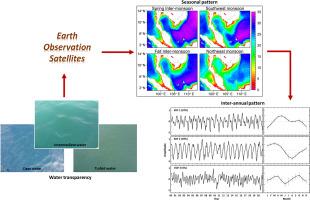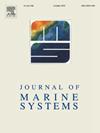Two-decade dynamics of MODIS-derived Secchi depth in Peninsula Malaysia waters
Abstract
Secchi disk depth (Zsd) is an essential environmental factor for studying ecosystem dynamics and biogeochemical processes in aquatic environments. Monitoring the long-term changes in water transparency is critical to predict the cascading impacts of climate change on marine ecosystems. We investigated the seasonal and interannual dynamics of Zsd in the eastern coast of Peninsula Malaysia (ECPM) and the Straits of Malacca (SoM) using a 21-year time series of MODIS ocean color data. To enable the reliable assessment of Zsd and its long-term variability, the performance of existing and regional algorithms was investigated using in-situ optical measurements collected during different monsoon seasons and in various environmental conditions. Our validation results showed that the existing Zsd algorithms performed adequately, but exhibited large errors, especially at relatively high Zsd values. On the other hand, the regional empirical algorithm based on a direct relationship between remote sensing reflectance and Zsd showed significant improvements by reducing the overall bias observed in existing Zsd schemes. The results indicated that the monthly climatological Zsd over the period 2000–2020 showed distinct patterns in different seasons. The ECPM waters had deeper Zsd than SoM waters. Maximum transparency usually occurred during the southwest and spring inter-monsoon and minimum transparency occurred during the northeast monsoon. Long-term seasonal evolution of Zsd reveals that widespread and persistent anomalies dominated the ECPM and SoM regions. Interannual trends indicate notable and complex changes in Zsd that were probably driven by variability in the ocean-atmosphere dynamics of Niño-Southern Oscillation (ENSO) and local environmental conditions. This study highlights the extensive analysis of Zsd status and its spatio-temporal pattern from space, which can significantly benefit long-term ocean monitoring efforts in the ECPM and SoM regions.


 求助内容:
求助内容: 应助结果提醒方式:
应助结果提醒方式:


